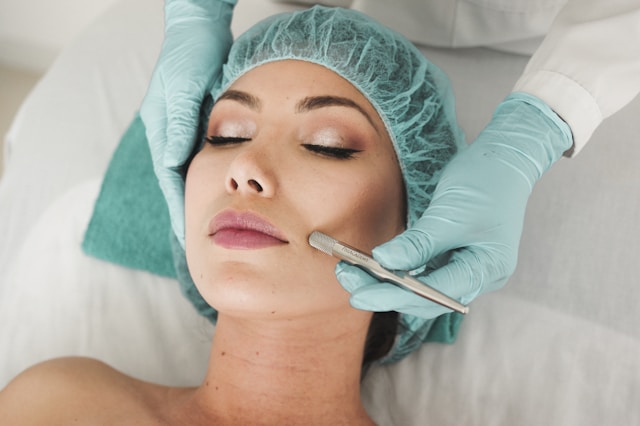Thinking about getting an aesthetic treatment? It’s important to know what to expect during recovery. Different procedures have different healing times. At Lelara Clinic, they can provide detailed information about recovery periods. Some treatments let you get back to your daily life right away, while others need more downtime.
Most non-surgical treatments have short recovery periods, often just a few days. You might see some redness or swelling, but it usually goes away quickly. Surgical procedures take longer to heal from. They can need weeks or even months of recovery time.
I always tell my patients to plan ahead for their recovery. It’s key to follow your doctor’s instructions carefully. This helps make sure you get the best results from your treatment. Remember, everyone heals at their own pace. Your recovery might be faster or slower than average.
Key Takeaways
- Recovery times vary widely between different aesthetic procedures
- Non-surgical treatments usually have shorter recovery periods than surgical ones
- Following post-treatment instructions is crucial for optimal results
Pre-Treatment Consultation and Preparation
Before getting any aesthetic treatment, I always have a detailed talk with my doctor. This helps me understand what will happen and how to get ready. It’s a key step for a good outcome.
Understanding the Procedures
I make sure to ask about the different types of aesthetic procedures available. My doctor explains how each one works and what results I can expect. We discuss which option fits my needs best. I also learn about the tools and techniques they’ll use. This helps me feel more at ease about the treatment.
For example, if I’m thinking about Botox, I ask how it stops wrinkles. If it’s dermal fillers, I want to know what they’re made of. I always check that my doctor is board-certified and has lots of experience.
Medical History and Risks Assessment
I always give my full medical history. This includes any allergies, medicines I take, and past surgeries. My doctor needs this info to keep me safe. We talk about possible risks and side effects. I’m honest about my health habits, like smoking or drinking.
My doctor checks if I’m pregnant or breastfeeding. Some treatments aren’t safe in these cases. We also discuss any skin conditions I have. This helps avoid bad reactions. I make sure to mention all vitamins and supplements I use too.
Setting Recovery Expectations
I ask how long it will take to heal after the treatment. Some procedures need more downtime than others. My doctor tells me what to expect day by day. We talk about any limits on my activities, like exercise or sun exposure.
I learn about possible side effects, like swelling or bruising. My doctor gives me tips to speed up healing. We set follow-up appointments to check my progress. I also get a list of do’s and don’ts for after the treatment.
My work and social plans might need adjusting. I make sure I have time to rest if needed. This helps me plan my recovery and get the best results.
Common Non-Surgical Treatments and Recovery
Non-surgical cosmetic treatments offer quick results with minimal downtime. I’ll cover the most popular options and what to expect during recovery.
Botox and Dermal Fillers
Botox and fillers are fast treatments with short recovery times. Botox injections take 10-15 minutes and target wrinkles. Fillers plump areas like lips and cheeks in about 30 minutes.
For both, I can go back to normal activities right away. Some redness or swelling at injection sites is normal for 1-2 days. Bruising may last up to a week. I use ice to reduce swelling.
Botox results appear in 3-7 days and last 3-4 months. Filler results are instant and last 6-18 months. Touch-ups may be needed.
Chemical Peels and Microdermabrasion
Chemical peels remove dead skin cells to improve texture and tone. Microdermabrasion exfoliates with tiny crystals. Both take 30-60 minutes.
My skin will be red and sensitive after. With light peels, redness fades in 1-7 days. Deeper peels may cause redness for 2-3 weeks.
I’ll avoid sun and use gentle skincare for 1-2 weeks. My skin may peel or flake. Results last weeks to months based on peel strength.
Microdermabrasion has less downtime. My skin may be pink for a few hours. I can wear makeup the next day.
Laser Hair Removal and Skin Resurfacing
Laser hair removal targets hair follicles. Sessions take 15-60 minutes based on area size. I’ll need 6-8 treatments spaced weeks apart.
My skin may be red and swollen for a few hours after. Ice helps. Hair falls out over 1-3 weeks. I avoid sun exposure between sessions.
Laser skin resurfacing improves tone, texture, and fine lines. Treatment takes 30-90 minutes. Recovery depends on laser strength.
With gentle lasers, redness fades in 1-3 days. Stronger treatments cause redness, swelling, and peeling for 5-7 days or more. I use gentle skincare and sun protection during healing.
Recovery Process for Cosmetic Surgery
Recovering from cosmetic surgery takes time and care. I’ll cover what to expect during healing, how to manage side effects, and lifestyle changes needed for a smooth recovery.
Postoperative Care and Observation
After surgery, I’ll be closely watched in a recovery room. The staff will check my vital signs and make sure I’m comfortable. Once I’m stable, I can go home with a caregiver. At home, rest is key. I’ll need to sleep with my head raised on pillows for the first few days.
I’ll have bandages or dressings on my incisions. The doctor will tell me how to care for them and when they can be removed. I may need to use special ointments on the surgical sites. It’s important to keep the area clean and dry to prevent infection.
Pain and swelling are normal. I can use ice packs and take pain meds as prescribed. If I had facial surgery, I should avoid bending over or lifting heavy things.
Managing Side Effects and Complications
Bruising and swelling are common after cosmetic surgery. These usually peak in the first week and then slowly get better. The doctor may give me tips to reduce swelling, like using cold compresses.
I need to watch for signs of problems. These include: • Fever over 101°F • Severe pain not helped by meds • Redness, warmth, or pus at incision sites • Bleeding that won’t stop
If I notice any of these, I should call the doctor right away. Most people don’t have serious issues, but it’s good to be aware of the risks.
Scars will fade over time but won’t go away completely. The doctor may suggest ways to help them heal better, like using silicone sheets or gels.
Lifestyle Changes and Follow-Up
For the best results, I need to follow all the doctor’s instructions. This might mean taking time off work and avoiding certain activities. If I had a tummy tuck or facial surgery, I can’t do hard exercise for several weeks.
I should eat healthy foods and drink lots of water to help my body heal. Smoking can slow healing, so it’s best to quit. I also need to avoid alcohol while taking pain meds.
Follow-up visits are very important. The doctor will check how I’m healing and remove stitches if needed. They can also answer any questions I have about my recovery.
Full recovery times vary by procedure. For example: • Rhinoplasty: 2-3 weeks for most swelling to go down • Liposuction: 1-2 weeks before returning to work • Facelift: 2-4 weeks for major swelling to subside
It may take months to see the final results of my surgery.
Aftercare and Long-Term Results
Proper aftercare is key to getting the best results from aesthetic treatments. I’ll cover how to keep your skin healthy and check if the treatment worked well.
Maintaining Skin Health
After laser skin resurfacing, I protect my skin from the sun. I use sunscreen and wear hats when outside. I keep my skin clean and moisturized with gentle products. I avoid picking at any scabs or peeling skin.
For other treatments, I follow my doctor’s advice closely. This may include using special creams or avoiding certain activities. I’m careful not to use harsh products that could irritate my skin.
I schedule follow-up appointments to check my healing. These visits let my doctor catch any issues early.
Evaluating Treatment Efficacy
I look for changes in my skin over time. This could be smoother texture, fewer wrinkles, or less scarring. I take photos before and after to compare.
I note any side effects like redness or swelling. These usually go away, but I tell my doctor if they last too long.
It can take weeks or months to see full results. I’m patient and don’t judge too quickly. If I’m not happy with my results, I talk to my doctor about options.




